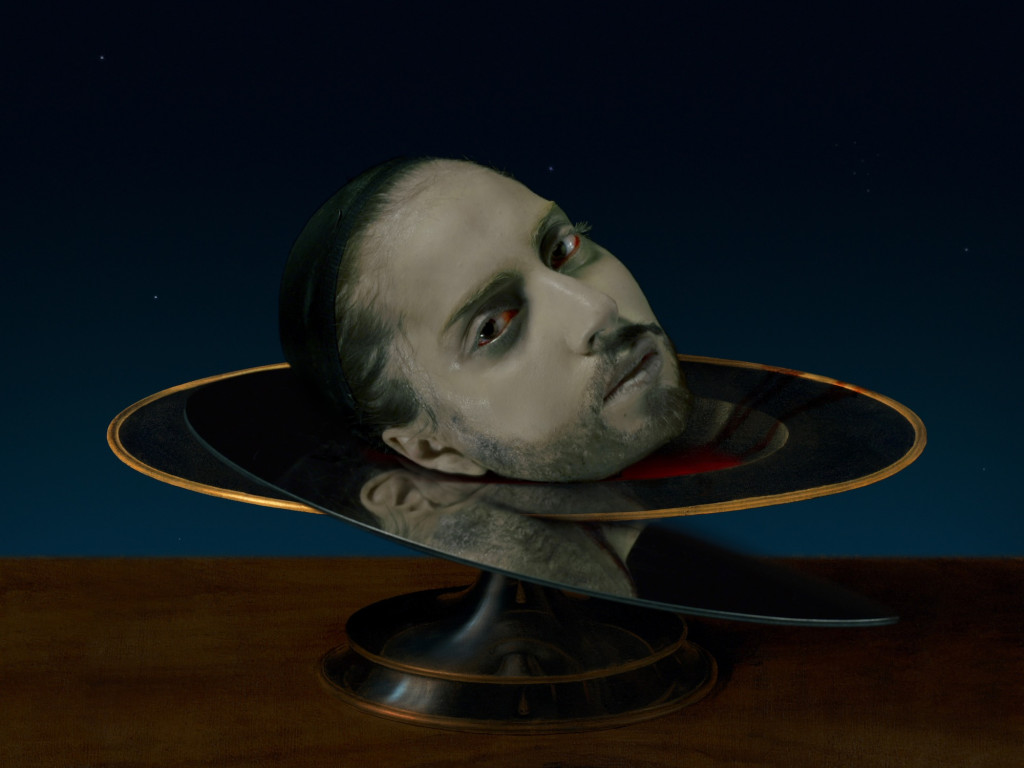[ad_1]
Robert Wilson is in Berlin, in a state of isolation like so many of us, but the storied experimental theater director has found himself in surroundings that allow for simple pleasures far away from his home in New York. “I’m staying in a house in private quarters surrounded by a garden and facing a lake, so I can go for walks in nature,” he said of the temporary location where he and his assistant are holed up. “No one is here. I don’t go out.”
He has, however, opened a portal of sorts in the form of a new online viewing room populated with mesmerizing video portraits he’s made over the years—including one of a Japanese kabuki dancer and another with Winona Ryder as a strange character in a Samuel Beckett play. More will be added in time, all in an effort to make accessible a vein of work that dates back, directly and indirectly, to a prescient vision Wilson developed in the early years of the Sony Walkman.
After meeting the famed Sony executive Akio Morita in Tokyo in the 1970s, Wilson—whose performance work began in the decade before and rose to great attention with his opera Einstein on the Beach, created with Philip Glass in 1976—thought the Walkman should have a visual component to accompany its ability to transmit sound. “I’d been thinking for a couple of years about moving images that would be accessible on a sort of handphone, on wristwatches, at bus stops, on bank lobbies, on the back seats of airplanes,” he said. “It could be like fire in a fireplace—you could either look at it or not look at it, but it would be this element.”
To test his idea for subtly moving video portraits, he shot one with Morita standing on a staircase for 20 minutes. “He said, ‘What am I supposed to do?’” Wilson recalled. “I said, ‘Well, think nothing—just stand there.’ He was fascinated, and I was told he kept this portrait on a monitor in his office for years.”
In the decades since, Wilson has made a slew of such portraits with artists, actors, athletes, royalty, and more. One that can be experienced in his viewing room now involves Lady Gaga dressed up to mimic historic paintings from the Louvre (by Jean-Auguste-Dominique Ingres, Jacques-Louis David, and others) on screens installed in the house of the late art collector Giuseppe Panza.
Another focuses on Suzushi Hanayagi, an old friend and collaborator of Wilson’s who was involved in different forms of Japanese dance and Noh theater. Filmed late in her life, after Hanayagi had been stricken by Alzheimer’s disease and left lying largely paralyzed in bed, the portrait followed a meeting during which she and Wilson communicated through tiny hand gestures they had shared in years past on the stage. As Wilson was leaving, Hanayagi whispered something to her son in Japanese. Shocked by her first spoken words in years, her son translated her thoughts: “I am dancing in my mind.” After that, Wilson said, “she made a dance piece in which she was lying on her back with her feet up in the air—and danced just with her toes.”

Sergio Tenderini/Courtesy Robert Wilson
Another portrait features Winona Ryder evoking Samuel Beckett’s Happy Days, a play whose main character is entrapped in a mountain with only her head sticking out above. “Winona’s father was a poet,” Wilson said, “and she was a babysitter for the children of Tom Waits.” (Wilson worked with Waits on the opera The Black Rider, first staged in 1990.) After Ryder expressed an interest in the writing of Allen Ginsberg and William S. Burroughs, she and Wilson arrived upon shared appreciation of Beckett—and a video portrait, first shown at Paula Cooper Gallery in New York in 2007, was born.

Courtesy Robert Wilson
All of the videos share common inclinations, however differently those inclinations might be expressed. “When I first made theater, what interested me was movement and stillness,” Wilson said. “These portraits are for the most part about interior movement and stillness—something that animals know so well. If you see a deer or a grizzly bear in the forest, they’re listening with their bodies. Or the way a dog walks up to a bird—listening not just with his ears but with his whole body.”
All of that suggests an appreciation of stillness that has been integral to Wilson’s work for decades—and might be good for all of us now. “The body is always hearing,” he said. “Stillness is very much a part of the way I direct a play in the theater, and now it’s transferred to these video portraits.”
[ad_2]
Source link

